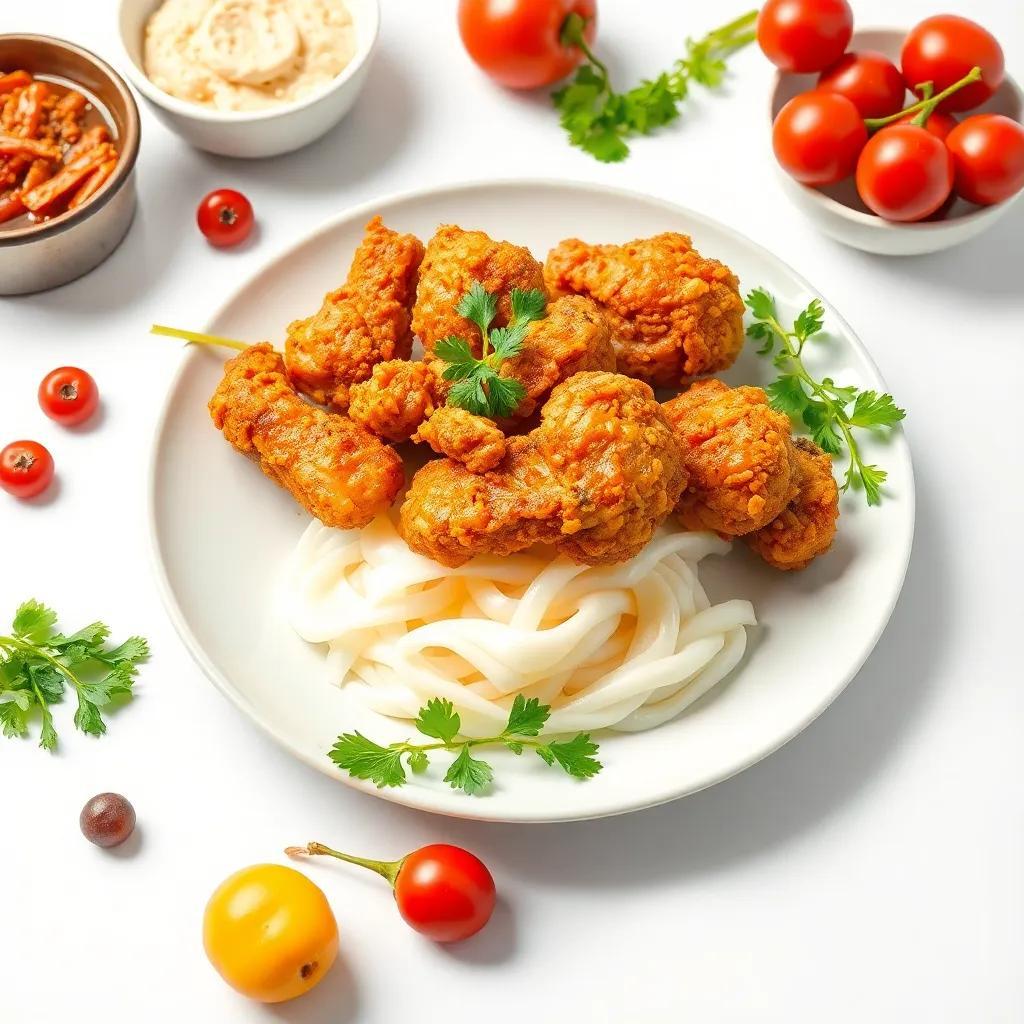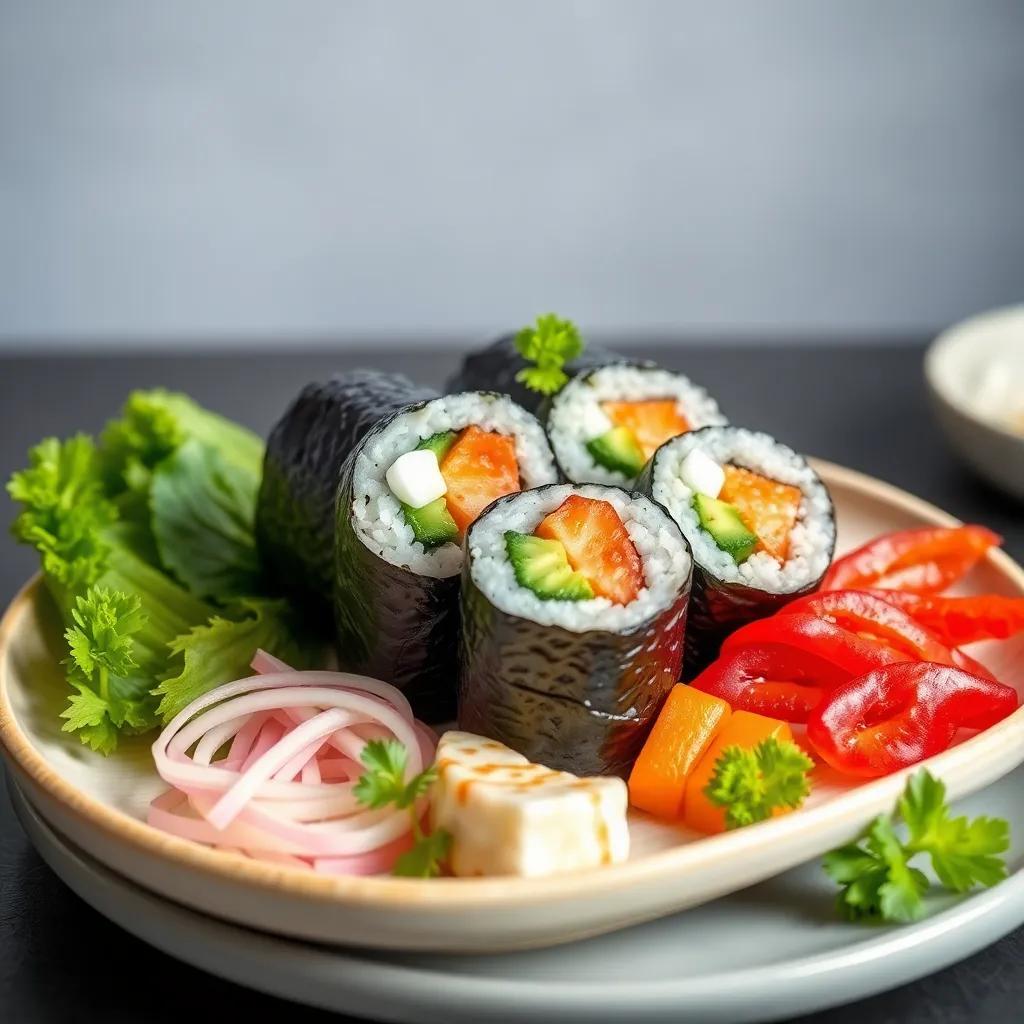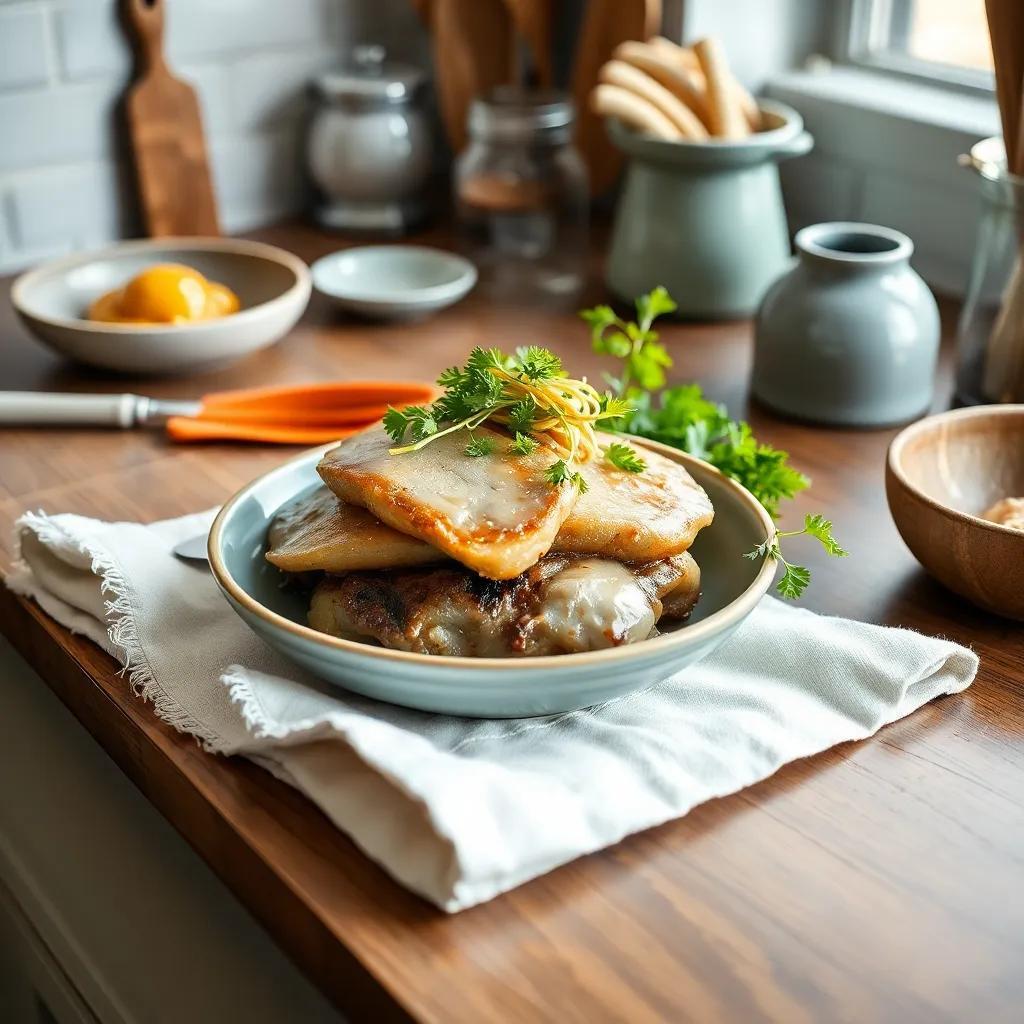Bibimbap Uncovered: Easy, Flavor-Packed Korean Bowl Recipe Guide
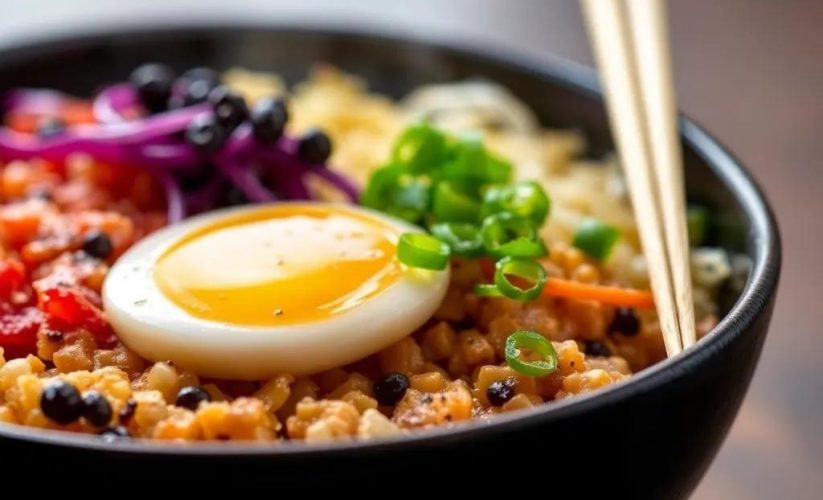
Bibimbap Uncovered: Easy, Flavor-Packed Korean Bowl Recipe Guide
🌍 Cuisine: Korean
⚙️ Difficulty: Medium
Ingredients
Nutrition Facts
550
Instructions
- Prepare all vegetables: blanch spinach and bean sprouts separately in boiling water for 1-2 minutes, then drain and squeeze out excess water. Julienne carrot and zucchini, slice shiitake mushrooms.
- In a skillet, heat 1 tsp vegetable oil over medium heat. Sauté carrots until slightly softened, about 3 minutes. Remove and set aside.
- In the same skillet, sauté zucchini for 2 minutes until tender. Remove and set aside.
- Sauté shiitake mushrooms with minced garlic and a pinch of salt until fragrant and cooked through, about 3 minutes. Remove and set aside.
- In the skillet, add remaining oil and cook ground beef seasoned with soy sauce, sugar, and pepper until browned and cooked through, about 5 minutes. Remove and set aside. (Skip or substitute with tofu for vegetarian option.)
- In a small bowl, combine spinach with 1 tsp sesame oil, a pinch of salt, and mix well. Repeat seasoning for bean sprouts.
- Fry eggs sunny-side up in a clean pan until whites are set but yolks remain runny.
- To assemble, divide rice into 4 bowls. Neatly arrange the prepared vegetables and beef on top of the rice in sections.
- Place a fried egg on top in the center of each bowl.
- Drizzle with remaining sesame oil and sprinkle toasted sesame seeds over each bowl.
- Serve with 1 tbsp gochujang on the side or on top according to taste.
- Before eating, mix all ingredients thoroughly to combine flavors and enjoy your authentic bibimbap bowl!
Serving Suggestions
- Serve bibimbap with a side of kimchi for an extra spicy and tangy kick.
- Add pickled radishes or cucumbers to brighten the palate.
- Pair this dish with a light Korean soup like doenjang jjigae (soybean paste stew).
- Use brown rice or mixed grains for a healthier twist and more fiber.
- Top with sliced avocado or drizzle a bit of sesame seed oil for added richness.
- For extra crunch, sprinkle crushed roasted seaweed (nori) sheets over the bowl.
- Enjoy it with a chilled glass of Korean barley tea (boricha) to cleanse the palate.
Table of Contents
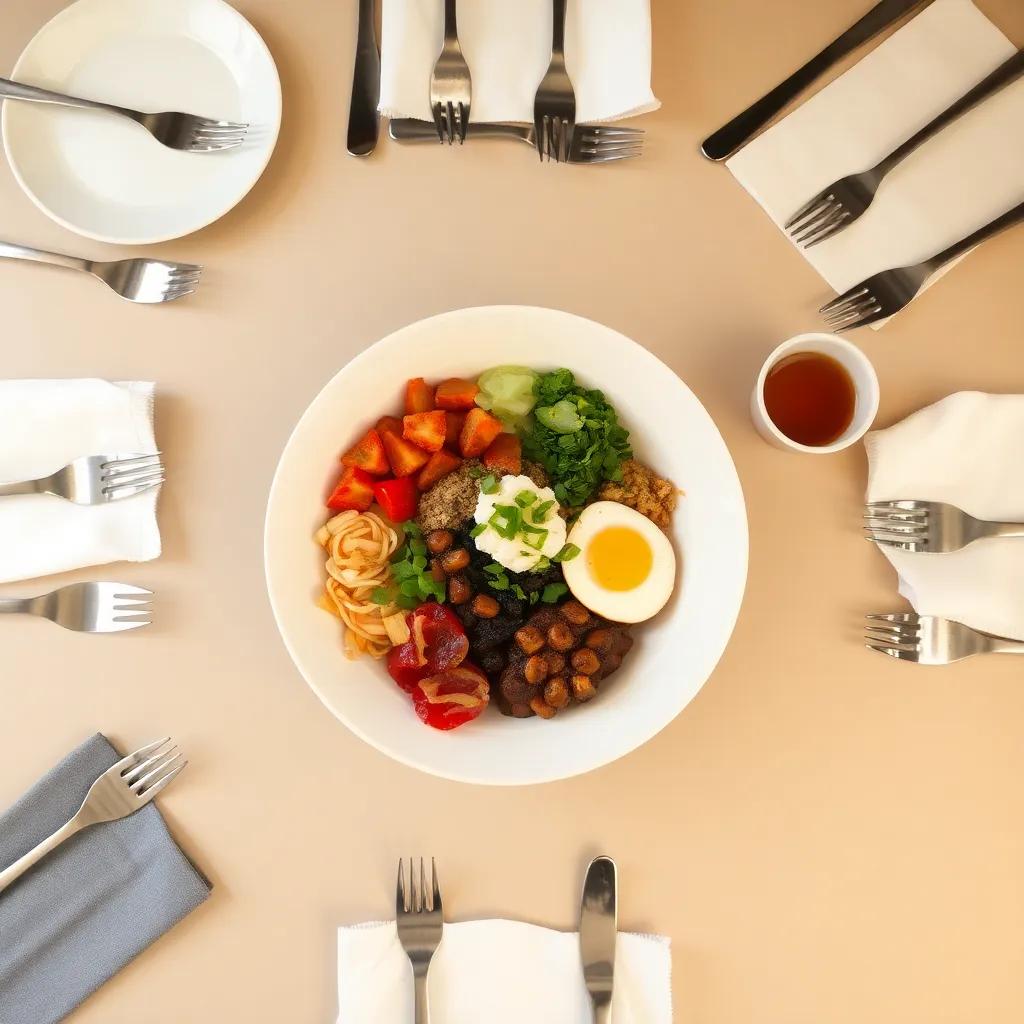
Intro
Bibimbap is much more than just a bowl of rice topped with various ingredients — it’s a vibrant mosaic of colors, textures, and flavors that come together in perfect harmony. This recipe invites you to explore the joy of assembling your own balanced meal that’s as visually appealing as it is satisfying. What makes bibimbap truly special is its versatility and the way each bite delivers layers of savory, sweet, nutty, and spicy notes in a single mouthful.
Despite its rich complexity, this dish is surprisingly approachable for any home cook. With straightforward steps and simple cooking techniques, you’ll find it easy to recreate an authentic Korean favorite right in your kitchen. Whether you’re cooking for a casual weeknight dinner, a weekend gathering with friends, or want to impress guests with something both healthy and exciting, bibimbap fits the bill.
The beauty of this recipe lies in its balance—combining nutritious vegetables, protein, and rice into one bowl that’s both wholesome and indulgent. Its personalized nature means it can easily be adapted to suit your preferences or dietary needs, making it a wonderful go-to meal that never feels routine. Prepare to enjoy the fun ritual of mixing all the ingredients together, as that final blend is where the magic truly happens.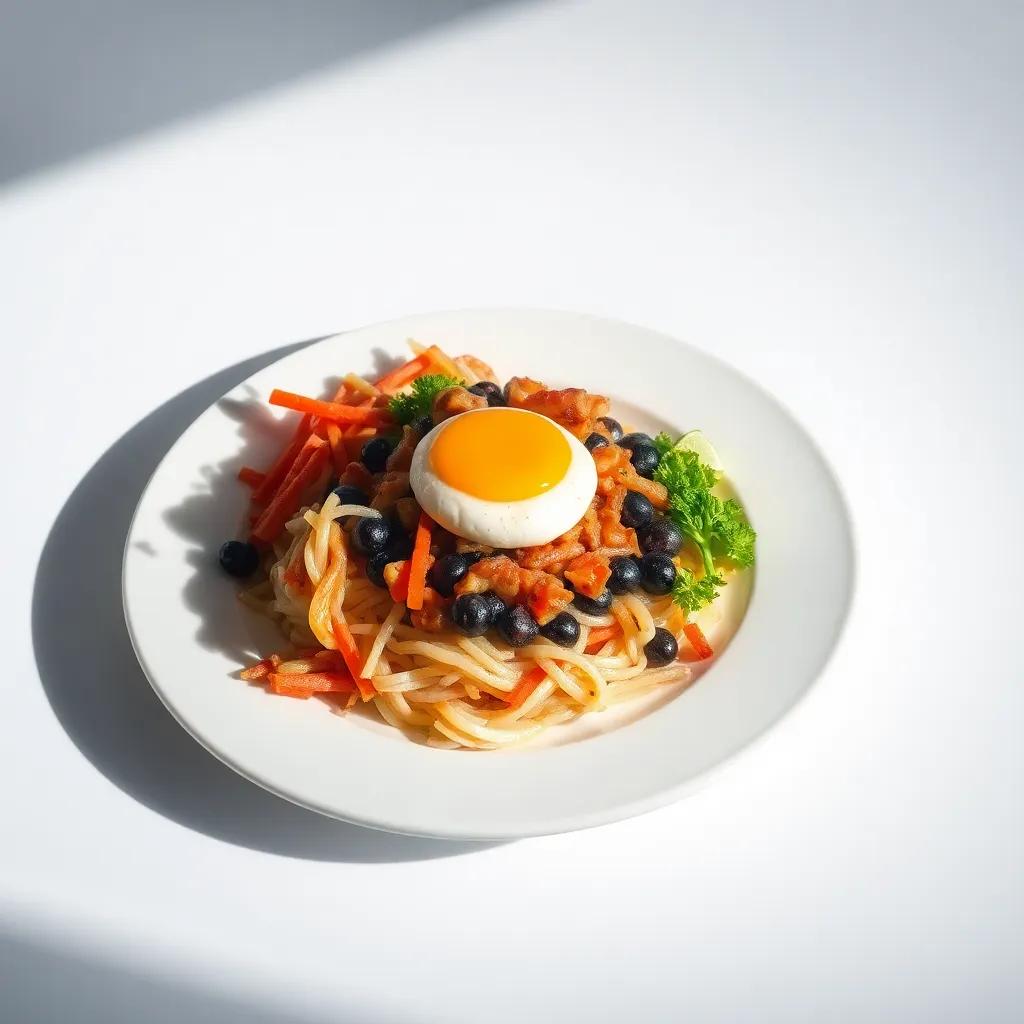
Ingredient Notes
One of the defining elements in creating an authentic bibimbap lies in selecting a few key ingredients that bring depth, distinct flavor, and texture to this Korean classic. Understanding these staples not only elevates your bowl but also helps you make smart choices and substitutions when necessary.
Gochujang (Korean chili paste): This fiery-sweet fermented chili paste is the heart and soul of bibimbap’s bold flavor profile. It provides a signature balance of heat, umami, and a subtle hint of sweetness that ties the whole dish together. When shopping for gochujang, look for a reputable brand with a rich, deep color and balanced spiciness—too mild and the dish loses its kick; too harsh and it can overpower other flavors. If you can’t find gochujang locally, try checking Asian markets or online specialty food stores. As a substitute, mixing a combination of miso paste, chili powder, a touch of honey, and a splash of rice vinegar can mimic its complex taste, though the authentic fermented tang will be missing.
Short-grain white rice: The compact, sticky texture of short-grain rice is essential for bibimbap, as it holds the ingredients together when mixed and delivers the signature chewiness that contrasts beautifully with the crisp vegetables and tender proteins. Japanese sushi rice or other medium- to short-grain rice varieties work well as alternatives. Avoid using long-grain rice like basmati or jasmine, as their drier, fluffier grains don’t meld as well in this dish. For a healthier twist, you can substitute with brown short-grain rice or mixed grains, just be mindful that cooking times and textures will vary slightly.
Shiitake mushrooms: These mushrooms bring an earthy, woodsy depth that enriches the savory profile of bibimbap. Whether fresh or dried, shiitakes add a meaty texture that complements both the vegetables and protein elements. When using dried shiitake mushrooms, rehydrate them in warm water until soft, saving the soaking liquid to add extra umami to stir-fries or soups. If shiitakes aren’t accessible, cremini or portobello mushrooms are decent stand-ins, providing a similar texture, though the flavor may be a little milder.
Sesame oil: A few drops of toasted sesame oil finish the dish with a fragrant, nutty warmth that awakens the ingredients and elevates the flavor complexity. It’s best to use toasted sesame oil rather than plain, as the toasting process intensifies its aroma and richness. When buying, check the bottle’s color—it should be dark amber—and keep it refrigerated after opening to preserve freshness. If you’re out or wish to skip it, a light drizzle of toasted peanut oil or even a sprinkle of toasted sesame seeds can provide some of those signature nutty notes.
Mastering these cornerstone ingredients opens the door to an authentic bibimbap experience. Each one contributes its own unique magic, enhancing the harmony of textures and flavors that make this Korean bowl a beloved classic around the world.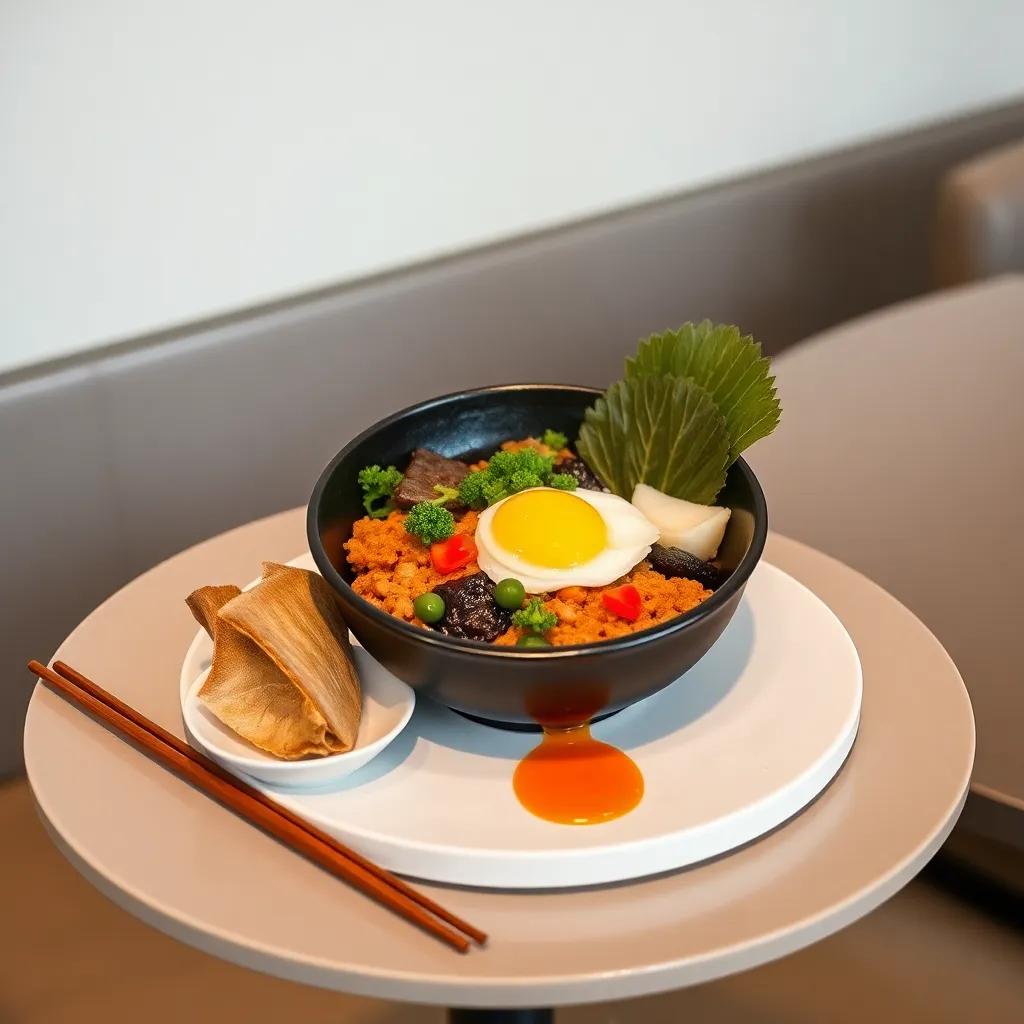
Tips & Variations
To truly elevate your bibimbap experience, keep a few pro tips in mind that enhance both flavor and presentation. For starters, prepping each vegetable separately and seasoning them individually with a pinch of salt and a drizzle of sesame oil ensures every component shines on its own before they mingle in the bowl. This layering of flavors is what gives bibimbap its dynamic character. Also, don’t overlook the importance of temperature contrast—serve the steamed rice warm and the veggies at room temperature or slightly chilled to create lively textural interplay when mixed.
When it comes to customizing, bibimbap is wonderfully adaptable. Swap ground beef for ground chicken or pork if you prefer a milder meat flavor, or try marinated bulgogi slices for a traditional twist. For a vegetarian or vegan bowl, replace meat with firm tofu, tempeh, or even hearty roasted sweet potatoes that add natural sweetness and bulk. To keep it gluten-free, use tamari or coconut aminos instead of soy sauce, and double-check your gochujang label since some brands contain wheat.
Feel free to experiment with the vegetable lineup based on seasonality and preference. Fresh cucumbers, sautéed kale, or even roasted mushrooms like oyster or enoki can beautifully complement the classic spinach, bean sprouts, and carrots. Adding crunchy elements such as toasted nuts, crispy fried shallots, or crushed roasted seaweed can introduce exciting textures that keep each bite intriguing.
For an extra layer of indulgence, try serving your bibimbap in a hot stone bowl (dolsot) if you have one. The heated bowl crisps the rice at the bottom, adding a delightful crunch and smoky aroma that’s simply irresistible. If you don’t have a dolsot, try briefly crisping the bottom layer of rice in a nonstick skillet with a little sesame oil before assembling.
Lastly, feel free to adjust your gochujang level—start with a small dollop and add more if you love heat, or mellow it out by mixing in some honey or toasted sesame oil to balance the spice. Remember, bibimbap’s beauty lies in the joyful mix-and-match ritual, so embrace personal tweaks that make this Korean classic uniquely yours.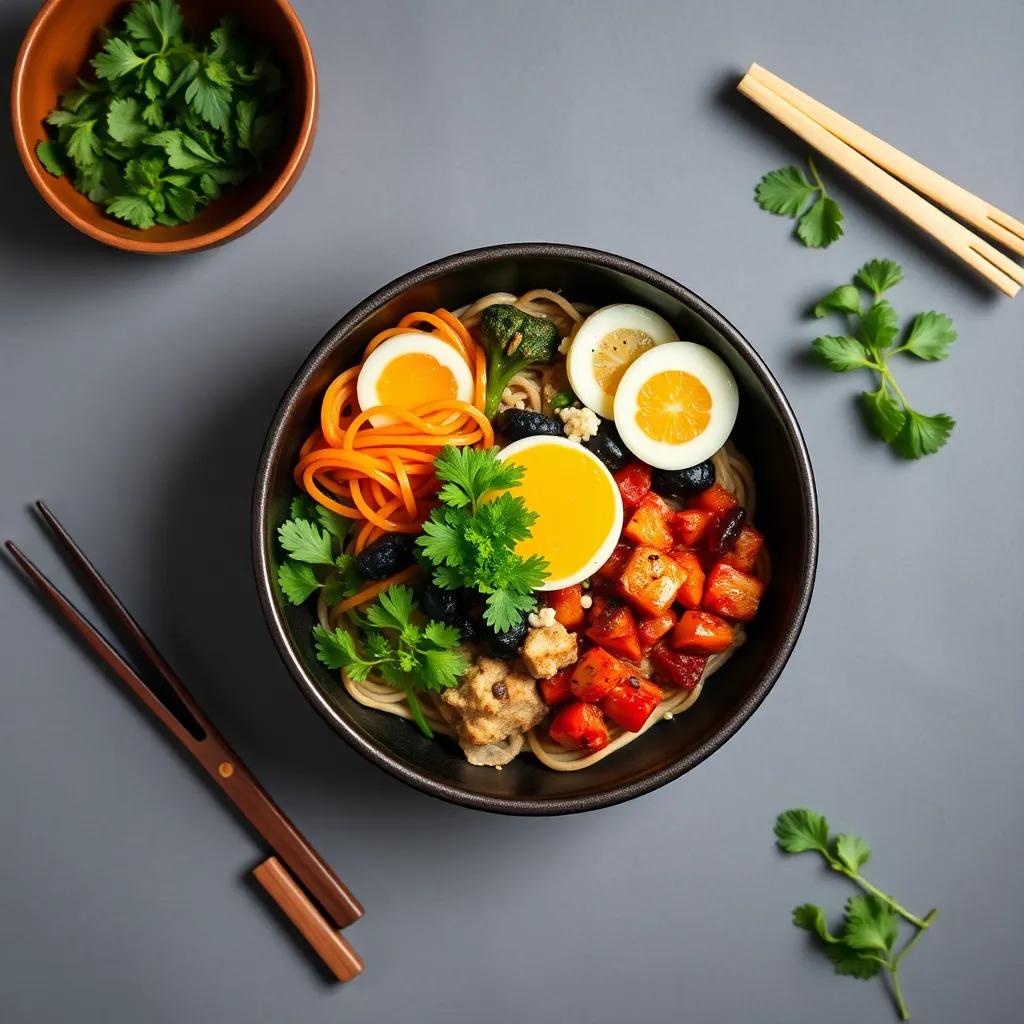
Leftovers & Storage
Leftovers of bibimbap can be a delightful bonus meal, but proper storage is key to maintaining its vibrant flavors and textures. Because bibimbap is a composed dish with cooked rice, sautéed vegetables, protein, and a fried egg, it’s best to store components thoughtfully to avoid sogginess or loss of freshness.
For short-term storage, place any leftover bibimbap in an airtight container and refrigerate promptly. The dish will stay fresh and tasty for up to 2 days. Since eggs do not reheat well once cooked sunny-side up, consider removing the fried egg before storing leftovers and either refrigerate it separately or simply prepare fresh eggs when reheating the bibimbap.
If you have leftover seasoned vegetables or cooked protein, you can store those separately in small containers to preserve their individual textures. This is especially helpful if you plan to reassemble a fresh bowl later, preventing ingredients from becoming mushy.
When reheating, avoid microwaving the entire bowl at once if it contains a runny egg; instead, warm the rice and vegetables gently in a skillet or microwave, then top with a fresh fried egg and a drizzle of sesame oil or gochujang for that newly mixed flavor experience. This approach keeps the integrity of the textures and prevents the egg from turning rubbery.
For longer storage, you can freeze cooked components like the ground beef (or tofu) or sautéed mushrooms and vegetables in separate freezer-safe containers or bags for up to 1 month. Rice can be frozen as well but may lose some moisture and become slightly dryer upon thawing; reheating with a sprinkle of water and covering during warming helps counteract this.
When meal prepping bibimbap, assemble the rice and cooked vegetables in portion-sized containers without the egg or sauces. Store sauces like gochujang or sesame oil separately in small containers or condiment cups to keep flavors bright and fresh. In this way, you can enjoy quick, made-to-order bibimbap throughout the week by adding freshly cooked eggs and mixing everything just before eating.
Ideal storage containers include glass or BPA-free plastic with tight-fitting lids to prevent odor absorption and moisture loss. Label your containers with dates to keep track and ensure you consume leftovers within safe timeframes.
Embracing these storage tips means you can savor bibimbap’s harmonious blend of flavors even on busy days, turning leftovers into a convenient and satisfying meal rather than a soggy afterthought.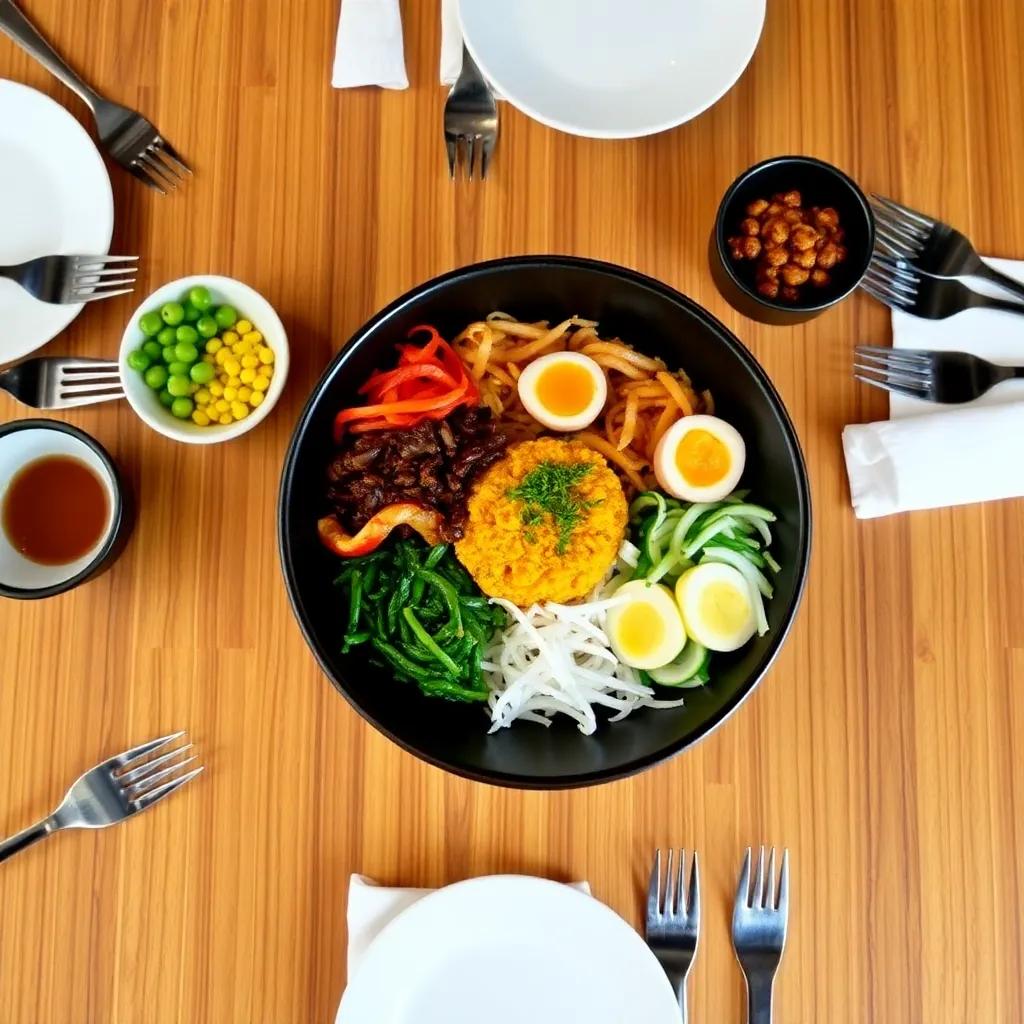
Behind the Recipe
Bibimbap is more than just a meal—it’s a cultural tapestry woven from Korea’s history, geography, and philosophy of balance. Traditionally, bibimbap dates back several centuries, rooted in the practice of using leftover side dishes and seasonal vegetables to create a satisfying, nutritious dish that embodies harmony in every bite. The name itself means “mixed rice,” reflecting the joyful ritual of combining colorful ingredients, each with distinct flavors and textures, into one unified bowl.
Historically, bibimbap was an elegant yet practical meal enjoyed by commoners and royalty alike. In the Joseon dynasty, it was often served during special occasions, symbolizing prosperity and good fortune as the different components came together—much like the melding of flavors on the palate. The use of gochujang, fermented chili paste, and a variety of fresh vegetables illustrates Korea’s deep connection with fermentation and seasonal eating, which remain central to Korean cuisine today.
On a more personal note, many Korean families regard bibimbap as comfort food—familiar, flexible, and endlessly nourishing. For those learning to cook it at home, bibimbap becomes a canvas to express creativity while honoring tradition. Preparing each seasoned vegetable separately before the final assembly mirrors the Korean culinary principle of respecting each ingredient’s essence before letting them mingle harmoniously.
This recipe taps into that rich cultural backdrop but is crafted for the modern cook: approachable, adaptable, and vivid. Whether you’re recreating a nostalgic family favorite or exploring Korean cuisine for the first time, making bibimbap is an invitation to connect with a timeless tradition celebrating simplicity, flavor, and community in one bowl.
FAQ
Can I substitute tofu for meat in this Bibimbap recipe?
What’s the best way to prepare the vegetables ahead of time?
Can I make Bibimbap gluten-free?
How should I store leftovers and can Bibimbap be reheated?
Is there a shortcut for making gochujang sauce if I don’t have the paste on hand?
Can I customize the toppings beyond traditional Bibimbap veggies?
Time to Dig In
Bibimbap is more than just a meal—it’s a vibrant celebration of textures, colors, and bold flavors all coming together in one satisfying bowl. With its easy preparation and endless room for personalization, this Korean classic invites you to bring a little delicious adventure into your kitchen.
Ready to give it a try? We’d love to hear how your bibimbap turned out! Feel free to leave a comment, share your favorite ingredient twists, or rate the recipe to help others discover this flavorful journey. Happy cooking!










